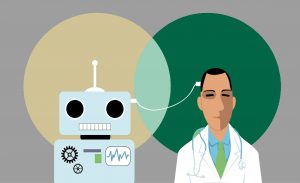Public health is a booming field that needs technology players and health information science companies to work together to create a framework in which data collection and analysis bears fruit for government agencies and society as a whole.
With this in mind, HIMSS, in partnership with the Association of Public Health Laboratories, the National Association for Public Health Statistics and Information Systems and the Council of State and Territorial Epidemiologists, launched the Data: Elemental to Health initiative in 2019. Their goal is to secure $1 billion in funding over the following 10 years.
So far, the initiative has been a success, with the partnership securing the desired funds for 2020 that will help the Centers for Disease Control and Prevention (CDC) and other health departments implement interoperable IT systems and hire data scientists capable of managing them.
Why is This Needed?
Interactive systems of government-run public health agencies are broadly referred to as “public health surveillance.” This encompasses state, local, federal and territorial levels and works with healthcare providers as well as the public in detecting, reporting and preventing illness or death caused by threats such as the flu, E. coli, opioids, Zika and other diseases, including the recent Coronavirus outbreak.
The problem with these systems is that they are built on legacy technology that is out of date and not fit for purpose from a security perspective. The solution, as proposed by the initiative, is a prolonged period of investment in data science tools and people in the form of career development and degree programs that can help shape the workforce needed to address ongoing issues.
What is the Goal?
There are five systems that support public health surveillance. The goal of the overall initiative is to modernize them with new technology and talent to maintain it and ensure that technology and data practices are kept up to date going forward.
The five systems are:
National Notifiable Disease Surveillance System (NNDSS)
The infrastructure of public health surveillance, the NNDSS collects case investigation data from various healthcare sites for examination by public health agencies. The information can then be sent to CDC to create a national picture of overall health and be used in responding to outbreaks.
Modernizing the system would create a greater level of data security, automate the electronic receipt of data, allow for real-time analysis from a variety of sources and streamline the communication of data from healthcare providers to public health officials.
Electronic Case Reporting (eCR)
Modernizing the eCR, which handles automatic submission of disease reports directly from EHRs to local and state health departments, would be a massive boost to public health interoperability efforts and create real-time reporting.
Syndromic Surveillance
This system provides hourly detection and continuous monitoring of health incidents in hospital emergency departments. It is an important tool during natural disasters, disease outbreaks and in assessing issues such as the opioid crisis. Modernization can lead to more hospitals participating in public health efforts and add the latest technology, such as artificial intelligence and predictive analytics, to the list of tools which can help monitor changes in rate of injury or illness within the community.
Electronic Vital Records System
A national reporting system that relays information related to birth and death from medical examiners, hospitals and physicians, the system is important in monitoring, preventing and reducing preventable deaths as well as maternal and infant mortality. Modernizing would secure systems across all jurisdictions, integrate the various provider technology systems and deliver real-time exchange of date and analysis.
Laboratory Information Management Systems (LIMS)
Lab data used to inform public health decisions is shared through LIMS by the Laboratory Response Network (LRN), which specializes in examining and responding to biological and chemical threats as well other public health crises. Modernizing LIMS would expand data capacity and enable improved data exchange and analytics to accompany a new wave of informatics tools. It would also connect LIMS with lab equipment so that data enters the system seamlessly and build a system in which results can be shared instantly while remaining secure.
Are you going to HIMSS 20? USF Health Online will be at the conference on University Row, booth UR20! Follow us on Facebook, Twitter, LinkedIn and Instagram to stay tuned with what we’re doing at HIMSS 20!
More than Tools
Each of the five systems has an important role in public health, but perhaps the most important part of the initiative is to develop a data science workforce capable of harnessing the power of new technology.
Some of the funding from Data: Elemental to Health would go toward education and professional development for data science professionals who will be hired or retained by public health agencies such as the CDC.
USF Health is dedicated to training professionals capable of helping with exactly these types of initiatives by offering graduate education in the form of degree and certificate programs. To learn more about our health informatics and healthcare analytics programs, click the button below.



